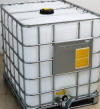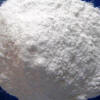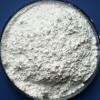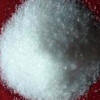Search for the supplies that you need here:
DMF Support and Documentations Available | |
 WHO-GMP Certified Good Manufacturing Practice Certified by World Health Organization |  WC, Written Confirmation for Active Substance to be imported into European Union (EU). |
Monocalcium Dicalcium Tricalcium Phosphate, Calcium Phosphate Monobasic Dibasic Tribasic IP EP BP Ph Eur USP Analytical Reagent FCC Food Grade Manufacturers & Directly Compressible Dicalcium Phosphate
Anmol Chemicals is a manufacturer supplier exporter of Monocalcium Dicalcium Tricalcium Phosphate, Calcium Phosphate Monobasic Dibasic Tribasic and it offers materials as per IP BP EP Ph Eur USP NF JP FCC Food Grade as per the the latest monograph at best prices. Anmol Chemicals Group, established in 1976, is the pioneer manufacturer of Specialty Chemicals, Pharmaceutical Excipients, Some API, Food Chemicals in India. Anmol Chemicals Group has manufacturing facilities spread across Western India, representatives in Houston, Chicago USA and Dubai, UAE. We also have toll manufacturing units for processing chemicals in a few countries around the world. We make IP, BP, EP, USP, NF, Ph. Eur., JP, FCC or Food Grade, Analytical Reagent Grade, LR or Laboratory Reagent Grades and Pure Grades of various chemicals. All our items are analyzed to meet the required standards. We can supply the product in grams for your laboratory trial and in tons for your plant scale jobs.
We manufacture Bulk Drugs / API, Excipients, Pharmaceuticals (IP BP USP NF Ph Eur EP JP), Specialty Chemicals (Pure/Reagent), Mineral Fortifiers (FCC). Our manufacturing facility is FDA approved and GLP, cGMP, ISO9001, ISO14001, ISO/IEC 17025, ISO22000, FSSC 22000, ISO45001, FSSAI, Kosher, HALAL, COPP, WHO-GMP certified and Written Confirmation (WC) is available. Solid materials can be customized for particle size, shape, and bulk density. We observe WHO Good Manufacturing Practices and Good Laboratory Practices. We are a government-recognized STAR Export House and "Authorised Economic Operator (AEO)" per Indian Customs.
All technical documents and DMF support available.
Monocalcium Phosphate Monobasic Calcium Phosphate Monobasic SDS of Manufacturers
Dicalcium Phosphate Dibasic Calcium Phosphate Dibasic SDS of Manufacturers
Tricalcium Phosphate Tribasic Calcium Phosphate Tribasic SDS of Manufacturers
We offer monobasic, dibasic and tribasic calcium phosphate in commercial pure and in IP EP BP USP NF FCC Food grade. You may visit:
Monobasic Calcium Phosphate FCC Food Grade Specifications
Monocalcium Phosphate; Calcium Biphosphate; Acid Calcium Phosphate
Ca(H2PO4)2 Formula weight, anhydrous 234.05
Ca(H2PO4)2-H2O Formula weight, monohydrate 252.07
CAS: anhydrous 7758-23-8
INS: 341(i) CAS: monohydrate 10031-30-8
DESCRIPTION
Calcium Phosphate, Monobasic, occurs as white crystals or granules or as a granular powder. It is anhydrous or contains one molecule of water of hydration, but because of its deliquescent nature, more than the calculated amount of water may be present. It is sparingly soluble in water and is insoluble in alcohol.
Function: Buffer; dough conditioner; firming agent; leavening agent; nutrient; yeast food; sequestrant.
REQUIREMENTS
Labeling: Indicate the state of hydration.
Identification:
A. Dissolve 100 mg of sample by warming it in a mixture of 2 mL of 2.7 N hydrochloric acid and 8 mL of water. Add 5 mL of ammonium oxalate TS. A white precipitate forms.
B. Add ammonium molybdate to a warm solution of sample in a slight excess of nitric acid. A yellow precipitate of ammonium phosphomolybdate forms.
Assay: Anhydrous: Not less than 16.8% and not more than 18.3% of Ca; Monohydrate: Not less than 15.9% and not more than 17.7% of Ca.
Arsenic: Not more than 3 mg/kg.
Fluoride: Not more than 0.005%.
Lead: Not more than 2 mg/kg.
Loss on Drying: Monohydrate: Not more than 1%.
Loss on Ignition Anhydrous: Between 14.0% and 15.5%.
Please visit Monocalcium Phosphate or Monobasic Calcium Phosphate Monobasic IP BP USP NF FCC Food Grade Manufacturers
Calcium Hydrogen Phosphate BP Ph Eur Grade
Dibasic Calcium Phosphate BP Ph Eur Grade Specifications
Calcium Hydrogen Phosphate Dihydrate
CaHPO4,2H2O -- 172.1 -- CAS 7789-77-7
DEFINITION
Content
Dibasic Calcium Phosphate 98.0 per cent to 105.0 per cent.
CHARACTERS
Appearance
White, crystalline powder.
Solubility
Practically insoluble in cold water and in alcohol. It dissolves in dilute hydrochloric acid and in dilute nitric acid.
IDENTIFICATION
A. Dissolve 0.1 g in a mixture of 5 ml of dilute nitric acid and 5 ml of water. The solution gives reaction of phosphates.
B. 5 mg gives reaction of calcium.
C. It complies with the limits of the assay.
TESTS
Solution S
Dissolve 2.5 g in 20 ml of dilute hydrochloric acid, filter if necessary and add dilute ammonia until a precipitate is formed. Add just sufficient dilute hydrochloric acid to dissolve the precipitate and dilute to 50 ml with distilled water.
Carbonates
Shake 0.5 g with 5 ml of carbon dioxide-free water and add 1 ml of hydrochloric acid. No effervescence is produced.
Chlorides
Maximum 330 ppm.
Dissolve 0.5 g in a mixture of 1 ml of nitric acid and 10 ml of water and dilute to 50 ml with water. 15 ml of the solution complies with the limit test for chlorides.
Fluorides
Maximum 100 ppm.
Sulphates
Maximum 0.5 per cent.
Arsenic
Maximum 10 ppm.
Barium
To 10 ml of solution S add 0.5 ml of dilute sulphuric acid. After 15 min, any opalescence in the solution is not more intense than that in a mixture of 10 ml of solution S and 0.5 ml of distilled water.
Iron
Maximum 400 ppm.
Heavy metals
Maximum 40 ppm.
1 ml of 0.1 M sodium EDTA is equivalent to 17.21 mg of CaHPO4,2H2O.
We also offer Directly Compressible Dicalcium Phosphate
Dibasic Calcium Phosphate USP NF Grade Specifications
Dibasic Calcium Phosphate
CaHPO4 136.06
Phosphoric acid, calcium salt (1:1).
Calcium phosphate (1:1) CAS 7757-93-9
Dihydrate 172.09 CAS 7789-77-7
Dibasic Calcium Phosphate is anhydrous or contains two molecules of water of hydration. It contains not less than 98.0 percent and not more than 105.0 percent of anhydrous dibasic calcium phosphate (CaHPO4) or of dibasic calcium phosphate dihydrate (CaHPO4-2H2O).
Labeling— Label it to indicate whether it is anhydrous or the dihydrate.
Identification—
A: Dissolve about 100 mg by warming with a mixture of 5 mL of 3 N hydrochloric acid and 5 mL of water, add 2.5 mL of 6 N ammonium hydroxide drop wise, with shaking, and then add 5 mL of ammonium oxalate TS: a white precipitate is formed.
B: To 10 mL of a warm solution (1 in 100) in a slight excess of nitric acid add 10 mL of ammonium molybdate TS: a yellow precipitate of ammonium phosphomolybdate is formed.
Loss on ignition— Ignite it at 800 to 825 to constant weight: anhydrous Dibasic Calcium Phosphate loses between 6.6% and 8.5% of its weight, and the dihydrate form of Dibasic Calcium Phosphate loses between 24.5% and 26.5% of its weight.
Carbonate— Mix 1.0 g with 5 mL of water, and add 2 mL of hydrochloric acid: no effervescence occurs.
Chloride— To 0.30 g add 10 mL of water and 2 mL of nitric acid, and warm gently, if necessary, until no more dissolves. Dilute to 25 mL, filter, if necessary, and add 1 mL of silver nitrate: the turbidity does not exceed that produced by 1.0 mL of 0.020 N hydrochloric acid (0.25%).
Sulfate— Dissolve 1.0 g in the smallest possible amount of 3 Nhydrochloric acid, dilute with water to 100 mL, and filter, if necessary. To 20 mL of the filtrate add 1 mL of barium chloride: the turbidity does not exceed that produced by 1.0 mL of 0.020 N sulfuric acid (0.5%).
Arsenic—The limit is 3 µg per g.
Barium— Heat 0.50 g with 10 mL of water, and add hydrochloric acid drop wise, stirring after each addition, until no more dissolves. Filter, and to the filtrate add 2 mL of potassium sulfate TS: no turbidity is produced within 10 minutes.
Heavy metals—: the limit is 0.003%.
Limit of acid-insoluble substances— not more than 0.2% of acid-insoluble substances is found.
Limit of fluoride— [NOTE—Prepare and store all solutions in plastic containers.]: the limit is 0.005%.
We also offer Directly Compressible Dicalcium Phosphate
Calcium Phosphate, Dibasic FCC Food Grade Specifications
Dicalcium Phosphate
CaHPO4 Formula weight, anhydrous 136.06
CaHPO4·2H2O Formula weight, dihydrate 172.09
INS: 341(ii) CAS: anhydrous 7757-93-9
CAS: dihydrate 7789-77-7
DESCRIPTION
Calcium Phosphate, Dibasic, occurs as a white powder. It is anhydrous or contains two molecules of water of hydration. It is stable in air. It is insoluble in alcohol, is practically insoluble in water, but is readily soluble in dilute hydrochloric and nitric acids.
Function: Leavening agent; dough conditioner; nutrient; yeast food.
REQUIREMENTS
Labeling: Indicate whether it is anhydrous or the dihydrate.
Identification:
A. Dissolve about 100 mg of sample by warming it with a mixture of 5 mL of 2.7 N hydrochloric acid and 5 mL of water. Add 2.5 mL of 6 N ammonium hydroxide, drop-wise, with shaking, and then add 5 mL of ammonium oxalate TS. A white precipitate forms.
B. Add 10 mL of ammonium molybdate TS to 10 mL of a warm 1:100 aqueous solution in a slight excess of nitric acid. A yellow precipitate of ammonium phosphomolybdate forms.
Assay Anhydrous or Dihydrate: Not less than 97.0% and not more than 105.0% Dibasic Calcium Phosphate.
Arsenic: Not more than 3 mg/kg.
Fluoride: Not more than 0.005%.
Lead: Not more than 2 mg/kg.
Loss on Ignition Anhydrous: Between 7.0% and 8.5%; Dihydrate: Between 24.5% and 26.5%.
We also offer Directly Compressible Dicalcium Phosphate
Please visit Dicalcium Phosphate or Calcium Phosphate Dibasic IP EP BP USP NF FCC Food Grade Manufacturers
Tribasic Calcium Phosphate BP Ph Eur Grade Specifications
Calcium Phosphate BP
CAS 7758-23-8
DEFINITION
Calcium phosphate consists of a mixture of calcium phosphates. It contains not less than 35.0 per cent and not more than the equivalent of 40.0 per cent of Ca (Ar 40.08).
CHARACTERS
A white or almost white powder, practically insoluble in water. It dissolves in dilute hydrochloric acid and in dilute nitric acid.
IDENTIFICATION
A. Dissolve 0.1 g in 5 ml of a 25 per cent V/V solution of nitric acid R. The solution gives reaction (b) of phosphates (2.3.1).
B. It gives reaction (b) of calcium (2.3.1). Filter before adding potassium ferrocyanide solution R.
C. It complies with the limits of the assay.
TESTS
Solution S
Dissolve 2.50 g in 20 ml of dilute hydrochloric acid. If the solution is not clear, filter it. Add dilute ammonia drop-wise until a precipitate is formed.
Dissolve the precipitate by adding dilute hydrochloric acid and dilute to 50 ml with distilled water.
Chlorides
Dissolve 0.22 g in a mixture of 1 ml of nitric acid and 10 ml of water and dilute to 100 ml with water. 15 ml of the solution complies with the limit test for chlorides (0.15 per cent).
Fluorides
Not more than 75 ppm of F, determined potentiometrically (2.2.36, Method I) using a fluoride-selective indicator electrode and a silver-silver chloride reference electrode.
Sulphates
Dilute 1 ml of solution S to 25 ml with distilled water 15 ml of the solution complies with the limit test for sulphates (0.5 per cent).
Arsenic
5 ml of solution S complies with limit test A for arsenic (4 ppm).
Iron
Dilute 0.5 ml of solution S to 10 ml with water R. The solution complies with the limit test for iron (400 ppm).
Heavy metals
Dilute 13 ml of solution S to 20 ml with water. 12 ml of the solution complies with limit test A for heavy metals (30 ppm).
Acid-insoluble matter
Dissolve 5.0 g in a mixture of 10 ml of hydrochloric acid and 30 ml of water. Filter, wash the residue with water and dry to constant mass at 100°C to 105°C. The residue weighs not more than 10 mg (0.2 per cent).
Loss on ignition
Not more than 8.0 per cent, determined on 1.000 g by ignition at 800 °C for 30 min
Tribasic Calcium Phosphate USP Grade Specifications
Tribasic Calcium Phosphate
Ca5(OH)(PO4)3 502.31
Calcium hydroxide phosphate (Ca5(OH)(PO4)3).
Calcium hydroxide phosphate (Ca5(OH)(PO4)3) CAS 12167-74-7
Tribasic Calcium Phosphate consists of a variable mixture of calcium phosphates having the approximate composition 10CaO·3P2O5·H2O. It contains not less than 34.0 percent and not more than 40.0 percent of calcium (Ca).
Identification—
A: To a warm solution in a slight excess of nitric acid add ammonium molybdate TS: a yellow precipitate is formed.
B: It responds to the flame test for Calcium.
Loss on ignition— Ignite it at 800 for 30 minutes: it loses not more than 8.0% of its weight.
Water-soluble substances— Digest 2 g with 100 mL of water on a steam bath for 30 minutes, cool, add sufficient water to restore the original volume, stir well, and filter. Evaporate 50 mL of the filtrate in a tarred porcelain dish on a steam bath to dryness, and dry the residue at 120 to constant weight: the weight of the residue does not exceed 5 mg (0.5%).
Acid-insoluble substances— If an insoluble residue remains in the test for Carbonate, boil the solution, filter, wash the residue well with hot water until the last washing is free from chloride, and ignite the residue to constant weight: the weight of the residue does not exceed 4 mg (0.2%).
Carbonate— Mix 2 g with 20 mL of water, and add 3 N hydrochloric acid, drop wise, to effect solution: no effervescence is produced.
Chloride— Dissolve 500 mg in 25 mL of 2 N nitric acid, and add 1 mL of silver nitrate TS: the turbidity does not exceed that produced by 1.0 mL of 0.020 N hydrochloric acid (0.14%).
Sulfate— Dissolve 500 mg in the smallest possible amount of 3 N hydrochloric acid, dilute with water to 100 mL, filter, if necessary, and to 25 mL of the filtrate add 1 mL of barium chloride TS: the turbidity does not exceed that produced by 1.0 mL of 0.020 N sulfuric acid (0.8%).
Arsenic — The limit is 3 ppm.
Barium— Mix 500 mg with 10 mL of water, heat, add hydrochloric acid drop-wise until solution is effected, and then add 2 drops of the acid in excess. Filter, and add to the filtrate 1 mL of potassium sulfate TS: no turbidity appears within 15 minutes.
Dibasic salt and calcium oxide— Weigh accurately about 1.5 g, and dissolve by warming with 25.0 mL of 1 N hydrochloric acid VS. Cool, and slowly titrate the excess of 1 N hydrochloric acid, while agitating constantly, with 0.1 N sodium hydroxide VS to a pH of 4.0, determined potentiometrically. Not less than 13.0 mL and not more than 14.3 mL of 1 N hydrochloric acid is consumed for each g of salt, calculated on the ignited basis.
Limit of fluoride— [NOTE—Prepare and store all solutions in plastic containers.]: The limit is 0.0075%.
Limit of nitrate— Mix 200 mg with 5 mL of water, and add just sufficient hydrochloric acid to effect solution. Dilute with water to 10 mL, add 0.20 mL of indigo carmine TS, then add, with stirring, 10 mL of sulfuric acid: the blue color persists for not less than 5 minutes.
Calcium Phosphate, Tribasic FCC Food Grade Specifications
Tricalcium Phosphate; Precipitated Calcium Phosphate
Calcium Hydroxyapatite
Ca3(PO4)2 Formula weight 310.18
Ca5OH(PO4)3 Formula weight 502.31
Ca10(OH)2(PO4)6 Formula weight 1004.61
INS: 341(iii) CAS 7758-87-4
CAS: 1306-06-5
CAS: 62974-97-4
DESCRIPTION
Calcium Phosphate, Tribasic, occurs as a white powder that is stable in air. It consists of a variable mixture of calcium phosphates. It is insoluble in alcohol and almost insoluble in water, but it dissolves readily in dilute hydrochloric and nitric acids.
Function: Ant caking agent; buffer; nutrient; clouding agent.
REQUIREMENTS
Identification
A. Add ammonium molybdate TS to a warm solution of sample in a slight excess of nitric acid. A yellow precipitate forms.
B. Dissolve about 100 mg of sample by warming it with 5 mL of 2.7 N hydrochloric acid and 5 mL of water; while shaking, add 1 mL of 6 N ammonium hydroxide, drop-wise and then add 5 mL of ammonium oxalate TS. A white precipitate forms.
Assay: Not less than 34.0% and not more than 40.0% of calcium (Ca).
Arsenic: Not more than 3 mg/kg.
Fluoride: Not more than 0.0075%.
Lead: Not more than 2 mg/kg.
Loss on Ignition: Not more than 10.0%.
We also manufacture Tribasic Calcium Phosphate IP Grade.
Please visit Tricalcium Phosphate or Calcium Phosphate Tribasic IP BP Ph Eur EP USP NF FCC Food Grade Manufacturers
We also manufacture IP EP Grade of Calcium Phosphate.
Keywords: Monocalcium Dicalcium Tricalcium Calcium Phosphate Monobasic Dibasic Tribasic IP BP Ph Eur EP USP Analytical Reagent FCC Food Grade CAS Number anhydrous 7758-23-8 monohydrate 10031-30-8 7758-23-8 7757-93-9 7789-77-7 1306-06-5 62974-97-4 Manufacturer Supplier Exporter Monograph Uses Chemical Molecular Formula Weight.



Manufacturer Supplier Exporter
ANMOL CHEMICALS Private Limited
Representatives in Houston, Chicago and New York, USA
TEL: (OFF) +91 22 23726950, +91 22 23774610, +91 22 23723564
Taloja Navi Mumbai, Banglore, INDIA
e-mail: info@anmol.org
Copyright and Usual Disclaimer is Applicable
Last updated 20-oct-25
Exporters to USA, Canada, UAE, Kuwait, Qatar, Gautemala, Tunisia, Europe, South Africa, Bangladesh, Sri Lanka, Tanzania, Kenya, Egypt, Iraq, Turkey, Israel, Vietnam, Nigeria, Uganda, Brazil, Chile, Argentina, Dubai, UAE, Saudi Arabia, Cameroon, Mexico, Brazil, Chile, Argentina, Korea, Thailand, Malaysia, Indonesia, Jakarta, Australia, China, Germany, France, etc.
Representatives in New York, Houston - Texas, Chicago - Illinois, Los Angeles.
All products are Sold for Industrial and Laboratory Use only.
Fast Selling IP BP Ph Eur EP USP NF JP Analytical Reagent FCC Food Grades of Chemicals by Anmol Chemicals
Ammonium Persulfate --- Acetic Acid Glacial --- Aluminum Chloride --- Ammonium bicarbonate --- Benzyl Alcohol --- Butylated Hydroxyanisole --- Butylated Hydroxytoluene --- Boric Acid --- Calcium Butyrate --- Calcium Chloride --- Calcium Hydroxide --- Calcium Lactobionate --- Calcium Saccharate --- Carbamide Peroxide --- Calcium Oxide --- Calcium Sulfate --- Chromic Chloride --- Fumaric Acid --- Magnesium Butyrate --- Magnesium Chloride --- Magnesium Sulfate --- Malic Acid --- Maleic Acid --- Manganese Chloride --- Manganese Sulfate --- Octyldodecanol --- Oleic acid --- Phenylethyl Alcohol --- Propylene Carbonate --- Potassium Hydroxide Pellets --- Potassium Alum --- Selenious Acid --- Sodium Acetate --- Sodium Bromate --- Sodium Selenite --- Sodium Perborate --- Sodium Hydroxide --- Sodium Sulphate --- Sodium Sulfide --- Sodium Thiosulfate --- Urea --- Zinc Chloride --- Zinc Sulphate ---






















